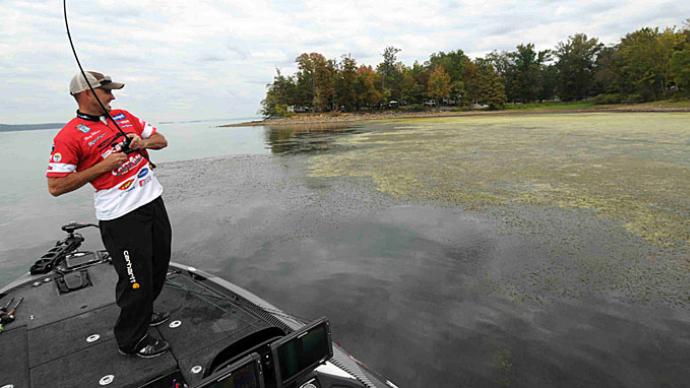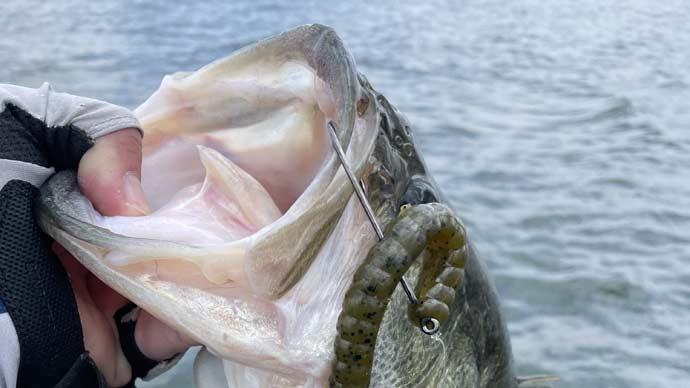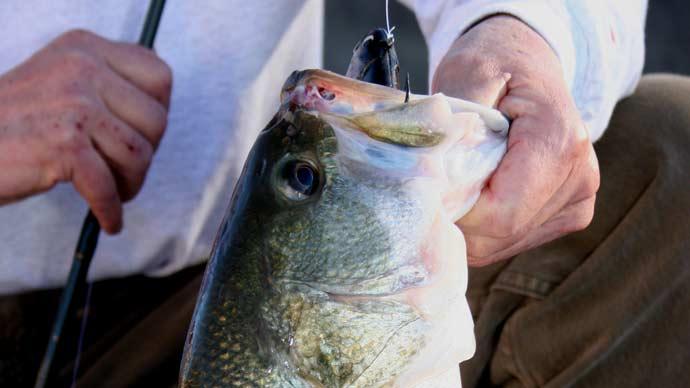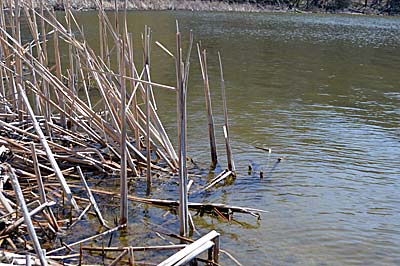
Despite advances in knowledge, equipment, and technology — we’re looking at you, forward-facing sonar — that help anglers pinpoint and catch bass, there’s still plenty of trial and error in fishing. While trying new techniques and waters are essential steps to becoming a better angler, you want to minimize your errors.
Common mistakes made by bass anglers run the gamut of frequency and severity. Some are unavoidable. But most are simple to see once they're pointed out and fixed with attention and forethought. Addressing them makes you a better angler.
Regardless if you make a few or a boatload, don’t be ashamed of your mistakes. They aren’t the end of the world. Simply knowing how they’re hurting your fishing success is enough incentive to correct them. And their fixes are simple enough. Here are five of the most common and how to correct them.
Only Casting Once
The grass always seems greener elsewhere. That’s especially true in bass fishing. Whether it’s the next laydown, dock or stump, the best spots always seem to be just ahead. That possibility is a powerful draw. But slowing down and concentrating on what’s directly off your bow can mean more and bigger bass in the end.
You need to fish each spot thoroughly. Dock talk is filled with stories of anglers catching big bass from a spot just vacated by a different angler. Deciding how long to stay depends on several variables, including season, spot size, and bass species. But for every spot, it's more than one cast. Even a lone rock on a shallow flat, for example, should attract a handful of your casts.
If you need a number, at least three casts are a good start. Use water color to determine if you should make a few more. As water becomes stained or muddy, for example, bass use their lateral line more and eyes less when feeding. So they may need time to find your offering. The first couple of casts may get their attention, but it could be the third or fourth when they strike.
Don’t let repetition lull you. Stay on point, getting the most from each cast, pitch, or flip. Here are a couple of ways to do that:
- Add variety by fishing a spot from different angles. It gives the bass a different look. If you're fishing a dock, for example, switch up by moving your boat close to shore and casting toward deep water.
- Encourage yourself to spend more time on a spot by rigging two baits. They may have similar actions — a spinnerbait and lipless crankbait, for example — but the profile or action of one may generate a strike.
Failing To Experiment
Image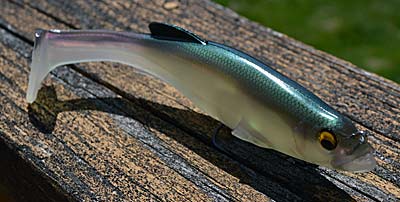
Experiment with different lures, especially ones that are new or unique to where you regularly fish. Large swimbaits, for example, produce big bass on lakes where, historically, they haven't been seen as an appropriate option. Photo by Pete M. Anderson All anglers are guilty of it. We buy plenty of lures in different sizes, actions, and patterns, but we revert to our favorite most of the time. And that's fine. Some days, you want to enjoy the success that old reliable almost always produces. But expanding your choices brings new rewards, from the satisfaction of learning and succeeding with a new technique to finding a lure that produces when your favorite stalls.
Repetition conditions bass to lures, dulling their interest in them. That’s one reason bass eventually cool to popular ones. Changing conditions is one more. Take the Great Lakes, for example, whose water became crystal clear thanks to zebra mussels and its smallmouth turbocharged from eating a seemingly endless supply of gobies. Those and countless other situations underscore the need to experiment.
Color, action, profile, sound — there’s plenty to try when it comes to bass-fishing lures. Add to those different presentations with the same lure. All take advantage of a bass’ curious nature. When something new comes into its world, it must examine it, so it usually ends up in its mouth. So, buy — and more importantly, fish — those lures that seem the wrong color or make an inappropriate action for where you regularly fish. Whichever one you choose, keep these in mind:
- Bass bite bigger baits than you believe. Swimbaits measuring 7 inches or longer and worms stretching to 10 inches are in play, more so under perfect conditions — warm water and low light.
- Sound can determine a lure’s productivity. Heavy cover and dirty water, for example, demand a noisy crankbait, one with plenty of BBs inside. One without rattles is better in clear water or when fishing pressure is extreme.
Bypassing The Shallowest Water
Bass fishing lives and breathes shallow water. It’s easy to reach, even for bank-bound anglers, and filled with targets to cast at. And it holds plenty of bass most of the year. But can water ever be too shallow? While a foot or less may test an angler’s confidence, it’s plenty for bass.
Not all shallow water supports bass. They need proper conditions, regardless of what depth they swim in. That includes appropriate water quality and plenty of food, whether that's baitfish, panfish, or crawfish. Water color plays a role, too. It gives bass security—hiding from predators or sneaking up on prey. The more stained the water, the less cover bass require in skinny water. A single log laying against the bank is enough to hold a bass in muddy water.
These skinny water spots aren’t home to only small bass. Big bass love to wallow there, too. Here are two more ways to catch more from the shallowest spots:
- Seek shallow spots with plenty of cover. It can take any form, including riprap, docks, and laydowns. But aquatic vegetation, especially emergent and matted, is the best by far. Bypass barren bottom.
- Weightless lures, such as a wacky-rigged stick worm, are best. They cast far and land with hardly a splash, so you don’t spook wary bass. The lure's slow fall means it’s in the limited water column longer.
Ignoring Your Gear
Image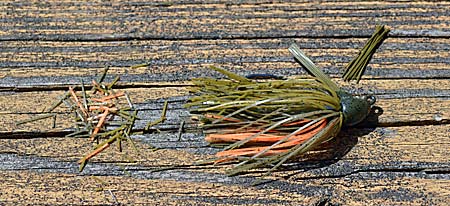
Review your gear between fishing trips, ensuring it's ready to roll. Taking time to prep new jigs before they go in your tackle box, for example, means they’ll be ready for action when you are. Photo by Pete M. Anderson In our quest to maximize precious fishing time, our gear often gets the short end of the stick. Most anglers believe it can handle the workload, pushing off regular maintenance and upkeep for another time. But waiting until it breaks or, worse, is ruined costs more time and money than a little preventive maintenance along the way.
Whether it’s used a few hours weekly or along the tournament trail daily, fishing gear needs regular attention to stay in bass-catching shape. Without it, abuse, whether from normal wear and tear, foul conditions, or accidents, will take its toll. Scheduled maintenance for your boat and motor, for example, is vital. Something as simple as cleaning and waxing or changing oil adds longevity to your equipment. And pay attention to the trailer, especially checking and maintaining tires and bearings.
Pay particular attention after a day of fishing in the rain. Open your tackle boxes and allow the baits to dry. Open compartments on your boat. Lay out your foul weather gear and PFD so they can dry and not mildew. Here are a couple more things to schedule to ensure you’re always ready to roll when it’s time to go fishing:
- Ensure lures are ready to fish. Brand-new jigs, for example, need skirts trimmed and weed guards thinned. Older ones need regular inspections to ensure hook points are OK and old trailers are removed.
- Keep your gear organized. Messes are frustrating and rob precious fishing time. Find a place in your boat or tackle box for everything, and return them between fishing trips.
Getting Too Serious
We’ve all been there. You become so passionate about something that your focus squeezes out the fun. You become so wound up that you get too excited when things are going well and too frustrated when they don’t. Both are recipes for spinning out and giving up.
Every trip isn't going to be a home run, even if you own the best equipment, have years of fishing experience, and understand bass activity and the myriad ways to catch them. Weather, fishing pressure, and a host of other variables are out of your control. Managing the highs and lows — hopefully more of the first — is vital to enjoying bass fishing now and well into the future.
It takes effort to keep you fishing in a Zen-like center. When things are going sideways, whether that’s rough water, traffic congestion at the boat ramp, or your third backlash in three casts, you must take a deep breath and let it roll off your back. And when you seem to be catching one every cast, be sure to enjoy the moment. But don’t expect it to happen every time moving forward.
Balance is crucial if you fish tournaments. The pressure that comes with producing under a time constraint can be motivating, exciting, and sometimes frustrating. So, keep your perspective by occasionally enjoying a fun fishing trip. It can be to a small lake that doesn't see tournament pressure or targeting fish other than bass. Either way, it’ll help you take stock and may provide a few things that you can apply to your tournament game. Here's a couple more ways to keep fishing fun:
- It’s easy to celebrate your catches with a quick photo or short video. But don’t forget about them. Take time to look at and watch them as a reminder of fun times past and inspiration for future trips.
- Make your fishing trips about more than catching. There’s plenty of enjoyment to be had in exploring new waters, trying new lures, and being outside among all of nature’s glory.


